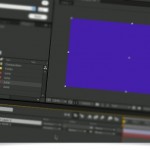Lightstorm3D’s L3Deformer for Maya is a suite of four deformation tools the first of which was the Colision Deformer, the second they show off here with the L3Deformer Texture Deformer which by all accounts looks pretty rad!
The Texture Deformer displaces shape components using Maya’s shading node networks. RGB channels of the texture output are mapped to XYZ displacement vectors. When deforming polygon geometry, the vertex normal can optionally be used as displacement vector with the B texture channel defining each vector’s length. Typical applications include geometry randomization, procedural modelling, liquid surfaces and more. Using a noise texture (i.e. Maya’s volume noise) you can turn the Texture Deformer into a noise deformer.
L3Deformer – Texture Deformer from Lightstorm3D on Vimeo.
L3Deformer – Texture Deformer (2/4) The Texture Deformer is the second of four tools contained in the L3Deformer package. The following video shows the capabilities of texture based deformation in Maya:
The Texture Deformer works with Maya’s 3D textures. 2D textures like image sequences or ramps can also be applied using projections. Texture networks can contain other node types such as utilities, but you cannot use textures of 3rd party renderers like Mental Ray or VRay. Any 3rd party texture nodes for Maya’s software renderer can be applied. The Texture Deformer provides several different methods to compute the displacement vector. Using the distortion feature you can apply a second texture network to modify the rotation of displacement vectors. The combination of displacement and distortion texture sampling allows for a wide variety of deformation effects.
Using the “slope” feature you can modify the displacement of polygon vertices based on the delta between the vertex normals and a reference vector. You can also use an animation curve to control the slope, which provides detailed control over slope falloff. Animation curves can also be used to remap the RGB values of textures. This method is way more precise and flexible than using Maya’s ramps to remap colors. The L3Library that ships free with the L3Deformer provides a node, that allows to animate the time and scale of otherwise static animation curves. Thus the remap effect can also be animated. We already started working on a library containing new procedural textures specially designed for deformation effects. We hope to be able to release this library shortly after the L3Deformer. More videos that cover the remaining two tools will follow soon.
Release Date: End of May Availability: Maya 2011, 2012 Windows -If you have not seen the first deformer in our package. Take a closer look here. vimeo.com/?23455409


